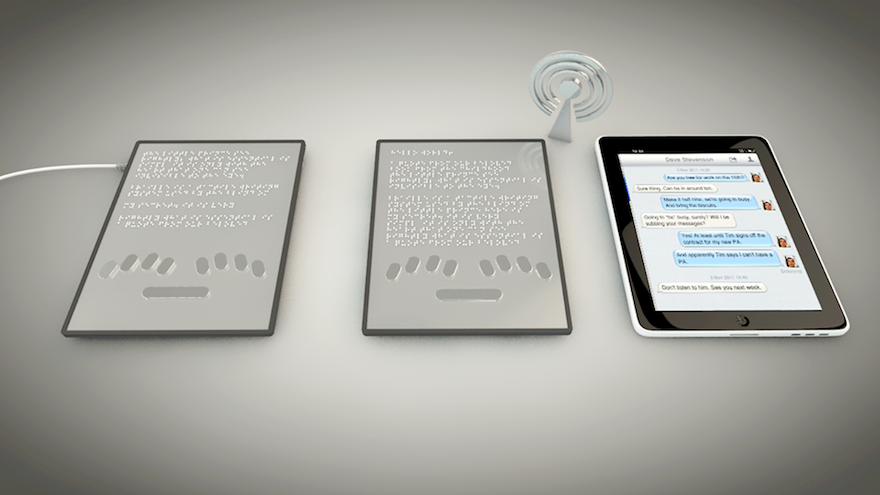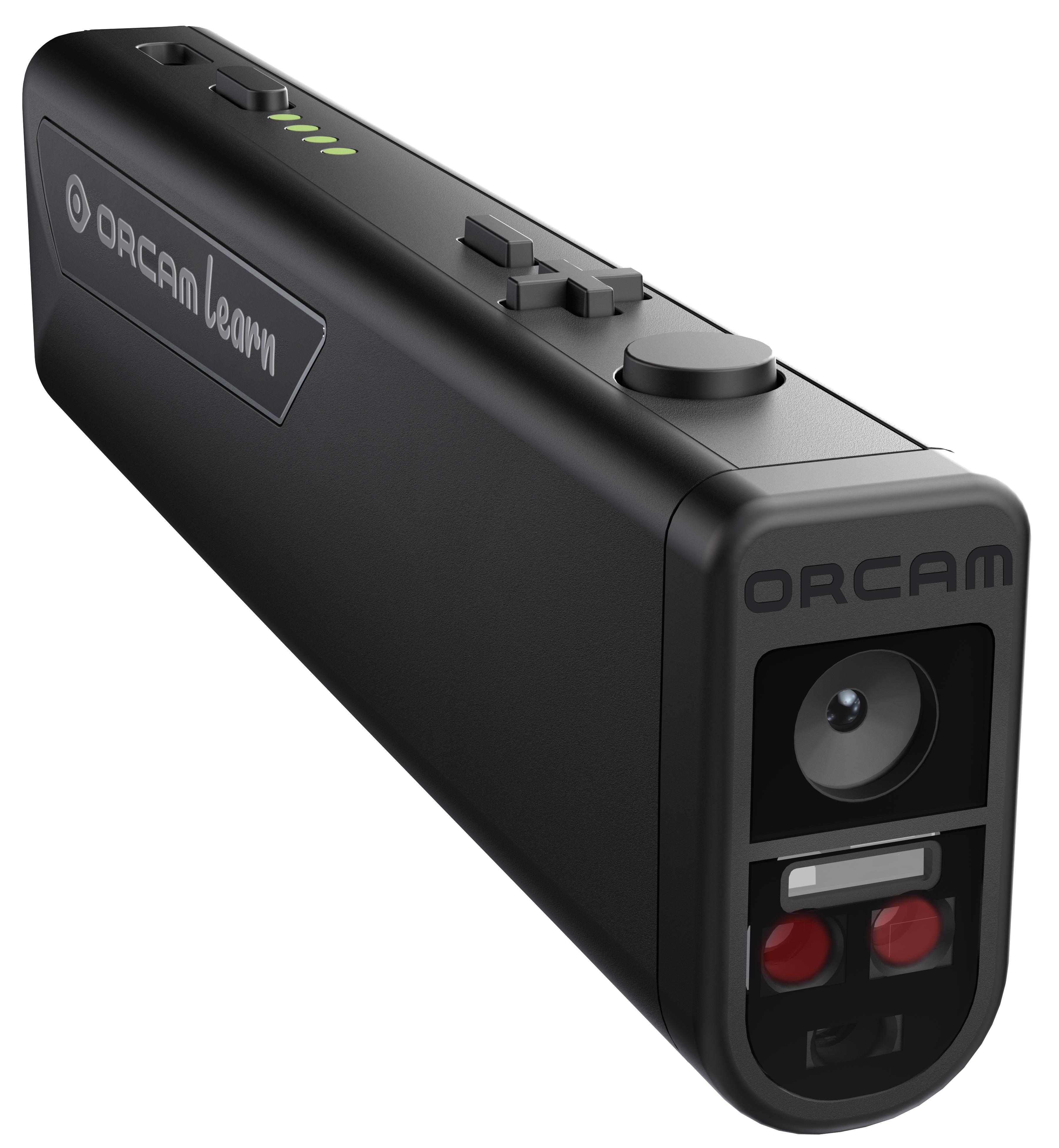AI-Powered Visual Aids: Transforming Support for the Blind
AI-Powered Visual Aids: Transforming Support for the Blind
Blog Article
An Overview to Life-altering Assistive Modern Technology for the Blind and Visually Impaired
The improvement of assistive technology has ushered in a transformative era for individuals who are blind or aesthetically damaged, offering devices that boost autonomy and enhance everyday experiences. Innovations such as wise navigating tools and AI-driven applications are redefining exactly how customers connect with their surroundings, while available reading options and wise home innovations assure to further boost the quality of life.
Smart Navigation Devices
Smart navigation devices are transforming the method individuals who are blind or aesthetically damaged communicate with their atmosphere. These sophisticated innovations, which integrate general practitioners, audio responses, and haptic signals, supply customers with vital info about their environments, improving their self-reliance and mobility.
One prominent example is the usage of clever walking sticks equipped with sensors that spot obstacles and give real-time responses via resonances or audio signs. These tools permit customers to navigate complicated environments, such as active streets or crowded public spaces, with increased confidence. Additionally, wearable tools, such as clever glasses, are being developed to help in acknowledging faces, reviewing message, and recognizing objects, better increasing the user's spatial recognition.
Moreover, smart navigation tools are significantly integrating expert system to evaluate information and adapt to users' choices. This customized method not only improves navigation effectiveness yet likewise cultivates a sense of empowerment among customers. As modern technology remains to development, the capacity for smart navigating devices to develop a more comprehensive and available globe for individuals that are blind or aesthetically damaged continues to be encouraging, ultimately reshaping their daily experiences and communications.
Ingenious Mobile Apps
Mobile applications are becoming effective tools for aiding individuals who are aesthetically impaired or blind, offering a range of capabilities that boost daily living. These applications harness progressed technology to assist in everyday jobs, boost availability, and advertise independence.
One group of innovative mobile applications focuses on visual recognition. Applications like Be My Eyes connect customers with sighted volunteers by means of video calls, allowing real-time assistance for jobs such as reading labels or navigating unfamiliar atmospheres. In a similar way, applications like Seeing AI utilize expert system to describe environments, reviewed message, and determine items, providing customers with essential details at their fingertips.
Another substantial location is navigating and orientation. Applications such as Aira and Close-by Traveler provide audio support, aiding customers navigate metropolitan spaces easily. They provide personalized help, allowing for an extra certain expedition of the environment.
Moreover, health and health applications accommodate details demands, such as medicine administration and physical fitness tracking. These applications intend to foster an alternative method to well-being, ensuring that individuals can maintain their wellness separately.
Wearable Assistive Tools
Wearable assistive gadgets stand for a significant development in innovation designed to support individuals who are visually impaired or blind. These gadgets improve movement and independence by supplying real-time comments regarding the surrounding environment. Amongst the most significant wearable innovations are smart glasses outfitted with video cameras and sensors, which can determine barriers and relay important information through audio signs.

One more cutting-edge choice includes wrist-worn tools that use ultrasonic waves to detect obstacles and supply navigational help. These devices often feature personalized settings, allowing individuals to tailor the informs to their certain requirements.
The assimilation of synthetic intelligence in wearable assistive innovation is additionally notable, as it continually boosts the accuracy and responsiveness of these tools. In general, wearable assistive tools are transforming the lives of the blind and visually damaged, fostering higher autonomy and boosting quality of life via innovative remedies.
Obtainable Reading Solutions
Obtainable reading options play a critical duty in making it possible for individuals that are blind or visually impaired to engage with text across numerous styles. These options encompass a range of tools and modern technologies designed to enhance reading experiences, from traditional print products to digital material.
One noticeable solution is Optical Personality Recognition (OCR) innovation, which transforms printed message into electronic layout, permitting customers to listen to or check out the web content making use of display viewers. Furthermore, specialized e-readers furnished with text-to-speech abilities use personalized reading experiences, allowing customers to readjust font dimensions and history shades for improved presence.
Another effective method is braille screens, which give responsive responses by transforming electronic message into braille. This allows individuals to read through touch, cultivating higher self-reliance and access to literary works. Additionally, advice mobile applications developed for checking This Site out scanned documents or publications can encourage individuals with immediate accessibility to a large collection of products.

Smart Home Technologies
Smart home innovations have transformed the way people that are blind or aesthetically damaged interact with their living environments, boosting both self-reliance and safety. These ingenious services take advantage of automation and connection to develop an easily accessible space tailored to the needs of customers.
Smart speakers and voice-activated aides offer hands-free control over numerous tools, allowing individuals to readjust temperature level, lights, and safety procedures through simple voice commands. This capability lessens dependence on sighted support and fosters a feeling of autonomy. Additionally, clever lighting systems can be customized to supply auditory responses or tactile signs, enabling individuals to navigate their homes more properly.
In addition, safety and security systems geared up with wise cams and sensors can send out real-time alerts to individuals, improving individual safety and security without requiring visual verification. Automated door locks provide satisfaction, enabling customers to safeguard their homes easily.
Incorporating clever home innovations not just improves everyday living but likewise urges social interaction via connected gadgets - Voice-activated assistive devices. With ongoing developments in assistive modern technology, the future shows up promising, as more options will arise to further empower individuals who are aesthetically damaged or blind, guaranteeing a much more comprehensive and independent way of life
Conclusion
In conclusion, the advancements in assistive technology for the blind and visually damaged stand for a considerable leap toward improving independence and lifestyle. Smart navigating tools, cutting-edge mobile applications, wearable tools, easily accessible reading solutions, and wise home technologies collectively cultivate a vision exam near me comprehensive atmosphere. This combination of technology not only boosts wheelchair and everyday living but additionally empowers individuals to involve completely with their surroundings, advertising higher autonomy and involvement in society.
Technologies such as wise navigation gadgets and AI-driven applications are redefining how individuals communicate with their environments, while available analysis options and smart home innovations guarantee to more raise the quality of life. As innovation continues to development, the possibility for wise navigating devices to produce a more inclusive and accessible world for people who are aesthetically damaged or blind remains promising, inevitably reshaping their everyday experiences and communications.
Wearable assistive devices represent a considerable innovation in innovation made to support individuals who are aesthetically damaged or blind. Among the most noteworthy wearable modern technologies are clever glasses equipped with sensing units and cameras, which can determine barriers and relay vital info via sound cues.
Smart navigation devices, innovative mobile applications, wearable gadgets, easily accessible analysis solutions, and smart home innovations jointly foster an inclusive environment.
Report this page